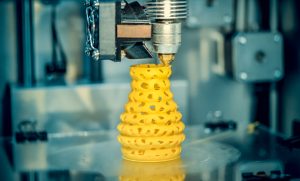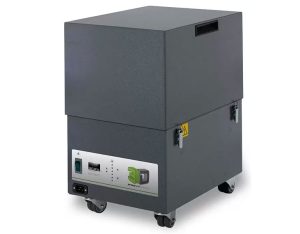The benefits of portable filtration technology in a 3D print environment
With the proliferation of 3D printing technology across an ever-wider range of industry sectors, more manufacturers are assessing the workplace atmosphere management and filtration options that deliver the best return on investment.
 Knowledge about the volume and make-up of emissions associated with additive manufacturing processes is growing. Indeed, BOFA has recently published an industry paper capturing empirical research into emissions linked to specific 3D print methodologies.
Knowledge about the volume and make-up of emissions associated with additive manufacturing processes is growing. Indeed, BOFA has recently published an industry paper capturing empirical research into emissions linked to specific 3D print methodologies.
The question for business isn’t so much if there is a need for effective filtration, but whether to opt for portable or fixed technology.
In weighing up the best approach, engineering and health and safety managers need to understand the risk in the workplace environment presented by any given process, assess the installation and life cycle costs of fixed and portable system options, and project the future mix of work relative to agility, capability, and capacity.
When it comes to 3D printing, the trend is toward portable filtration technology. Here’s why:
- Portable systems are more maneuverable than fixed systems, enabling a 3D print farm to be reconfigured more easily in step with demand or to add new printers.
- 3D printing offers flat economies of scale, so the value proposition centers on flexibility, agility, and speed – all benefits supported by portable technology.
- Portable filtration and atmosphere management support a ‘make anything anywhere’ production culture – it is quicker, easier, and likely to be less expensive to set up than a fixed central system. As a business grows, portable extraction can follow, enabling rapid start-up in bigger premises, thereby minimizing disruption to production and delivering an ongoing return on investment.
- There are unlikely to be barriers to installation with portable systems, unlike vent-to-air, which will require extraction via an external wall.
- Running costs for portable systems can be more predictable because a centralized system will also likely extract factory heat, which will need to be replaced. In general, portable systems will tend to use less energy as they move air a short distance in the print cabinet rather than feeding a ducted system.
- Portable solutions can also be more environmentally friendly by filtering emissions at the point of print, thanks to system architecture that includes pre-filtration (to remove larger particulate), a HEPA filter, an activated carbon filter, and a smart operating system that regulates airflow and monitors filter condition to optimize filter life and ensure timely exchange. This setup can help keep expensive 3D print components free from dust or sticky deposits, thereby optimizing productivity, minimizing the risk of downtime, and supporting manufacturers’ workplace environmental health strategies.
BOFA is continuously innovating with industry and 3D print equipment providers to optimize the value of portable system performance, matching design and filtration to specific processes and the type, volume, size, shape, and velocity of particles being emitted.
For example, BOFA’s recently enhanced 3D PrintPRO 4 technology offers wider filtration airflow ranges and expanded filtration capacity and is suitable for larger 3D printing processes including fused deposition modeling, fused filament fabrication, stereolithography, digital light processing, and material jetting.

The upgraded unit has advanced multi-stage gas filtration, with a deeper carbon bed to capture a greater volume of potentially harmful fume, thereby extending filter life and helping ensure odorless printing for longer. This is complemented by a larger HEPA filter, enabling multiple 3D printers to be hooked up to a single BOFA unit, optimizing investment in filtration technology to help keep workplaces free from airborne contaminants and equipment clear of particulate residue.
To learn more, explore BOFA’s range of 3D print filtration and atmosphere management solutions.


